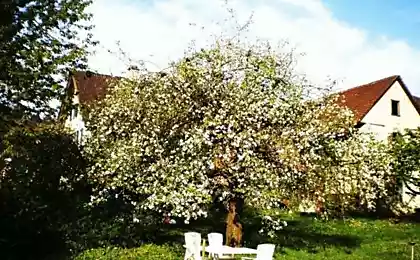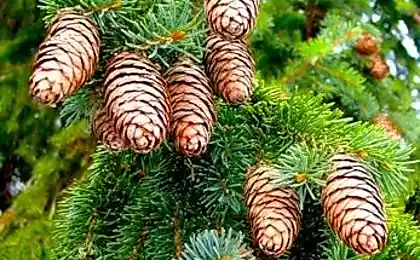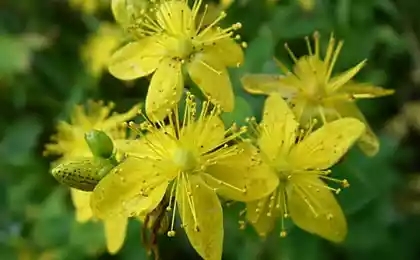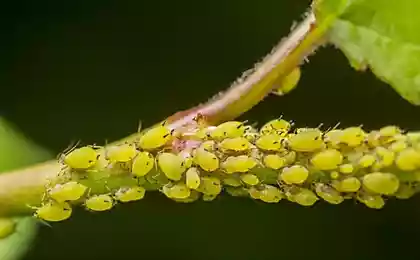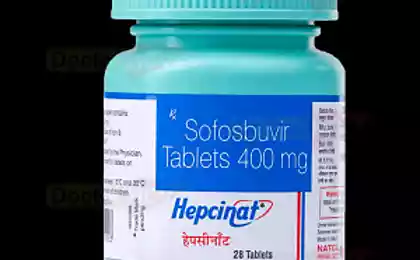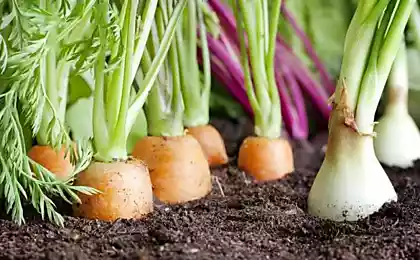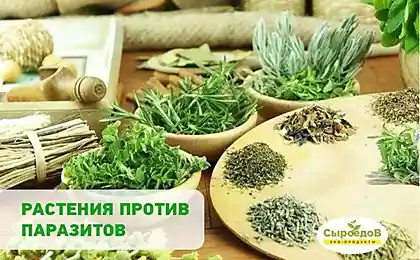684
Recipes infusions and decoctions for eco-friendly pest control
For growing organic vegetables and fruits is necessary, if possible, to avoid treatments with chemical drugs and to give preference to traditional methods. Infusions and decoctions of herbs have insecticidal, fungicidal and antifeedant properties and can be used to protect plants from diseases and pests.
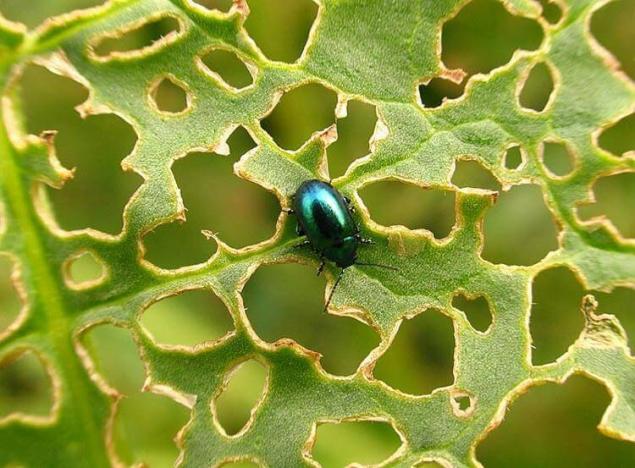
Aloe. The juice of the plant diluted with water (1:1) and used for disinfection of vegetable seeds. Before sowing the seeds soak in this solution for 6 hours, then washed with water and well dried.
Orange. Dry crusts (1 kg) pour 10 liters of warm water and put in three days in a warm, dark place. Infusion is used without diluting for spraying of plants against aphids and mealy worms.
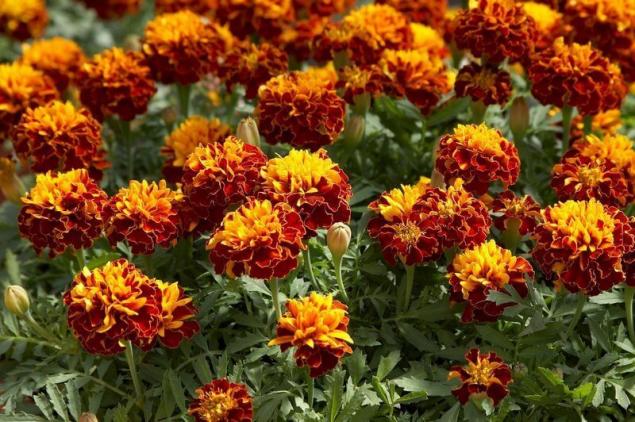
The marigolds. The plant is completely disrupted in the flowering period, dried, crushed, placed in amalienstein from pests receptance bucket (half), fill to the brim with warm water. Insist for two days, then filtered. In the infusion add 40 grams of household soap and use to spray berry plants against aphids. The treatment is carried out only until the first signs of ripening berries and resume after harvest. Infusion can disinfect the tubers of gladiolus from various fungal diseases before planting, as well as the testes asters and Wallflowers from the black legs, dropping him to 8-10 hours.
Hogweed dissected. Raw materials harvested before and after flowering (roots) and during flowering (aerial parts — leaves, stems), finely chopped, pour a water amount of 10 l of water for 1 kg of raw material, insist 24 hours, filtered and immediately used for the treatment of fruit crops against aphids, mites and other sucking pests.
Elderberry red. Young dry shoots or flowers of elderberry cook broths to protect fruit and vegetable crops against leaf-eating caterpillars, aphids, slugs, larvae of flies and beetles, while take 200-300 g of crushed shoots and flowers and soaked in 10 l of water. Infusion the plants are sprayed before flowering and after it. Red elderberry is a good deterrent means, for example, against the currant Bud mite. To get rid of it, before flowering currant bushes between her need to place in water fresh branches of an elder, changing them wilting. Recommended to plant elderberries on the property to deter gooseberry moth and of the Codling moth plum and Apple trees. The smell of elderberry also deters mice and rats, so the barns, sheds early planted red elderberry.traditional methods of pest control

Highlander pepper. For the destruction of leaf-eating pests of many vegetable and fruit crops you can use a decoction of the stems of this herb, which is collected during flowering (June — July). At the same time, it apply. Gathered stems (1 kg) pour 10 liters of water and boil for 30 minutes After settling, the broth is filtered, add in 30-40 grams of soap and used for spraying. After 1-1,5 days pests are killed.
White mustard. Mustard powder factory manufacturing (200 g), pour 10 liters of water and infused for 10-12 hours. Extract obtained sprayed Apple trees (green leaves), and other fruit crops (5-6 g on 10 l of water) against the red mite Codling.
Brassica juncea. Use the green leaves against aphids, caterpillars, scoop, tobacco thrips, red bugs and ticks.
Recipe 1. On 10 l of water take 100 grams of mustard powder, stir it in a little water to a creamy consistency, then poured the remaining amount of water.
Recipe 2. To prepare the solution against the red mite Codling take 200 g of powder factories manufacturing. Pour 10 liters of water and infused for 10-12 hours. Extract obtained spray Apple trees.
Recipe 3. Used when the appearance of red Apple tick. A solution is prepared from 50 g of mustard powder in 1 l of water. It is boiled and infused for three days in a tightly sealed container. This solution was then diluted in 20 liters of water. Obtained working solution sprayed plants. Garlic mustard can also be used for treatment of planting material (10 g of powder in 1 l of water).
Birch tar. Used for spraying against Colorado beetle. When preparing the working solution of 100 g of tar is diluted in 10 liters of water.
Datura ordinary. Used in the summer mainly for control of pests of fruit crops, plant bugs, spider mites, aphids and Apple suckers. Harvest the entire aboveground part of plants in the flowering period. Then dry that each plant is well ventilated, crushed, pour 10 liters of water and infused for at least 10 hours. The infusion is filtered before use, add 20-40 grams of soap.
The smoke of tobacco. Used to kill aphids in greenhouses and medanic in the gardens. In the first case iron pans or pans scatter tobacco dust or tobacco the rate of 5-10 grams of tobacco per 1 m2 of the premises. Trays put on burning coals or hot plates with a closed spiral. And fumigate the premises prior to the termination of dymlenija. For the treatment of orchards against medanic 2-3 kg of tobacco dust poured into a pile of straw or other combustible material, and after kindling a fire, fumigate for half an hour.
Ash. Wood or straw ash opilivayut seedlings of cabbage, radish and radish at a rate of 5 g per 1 m2 to deter cruciferous flea beetles. You can apply polynomially infusion. To do this, 1 kg of ash poured 8 liters of boiling water, cover, insist two days, filtered, made up to 10 l, add 40 g of soap, previously dissolved in water. The plants are sprayed as needed. Ash-soap infusion is used against a complex of sucking pests. Amateur growers have also reported the effectiveness of dusting with ashes against the Colorado potato beetle. Gray gelseminine destroy pollination shrubs at maturity at the rate of 10-15 g of ash into a Bush. If necessary, the dusting is repeated 2-3 times. Many gardeners to combat powdery mildew of currant, gooseberry, cucumber, cherry mucous Sawfly and other pests and diseases the plants are sprayed with a solution of ash: 300 g sifted ash is boiled for half an hour, the supernatant broth is filtered and adjusted to 10 L. Before use, add 40 g any soap. Such processing can be done twice a month.
Lime. Used for dusting between the rows against slugs. Consumption of 50 g per 1 m2. The treatment is carried out in the late evening or early morning.
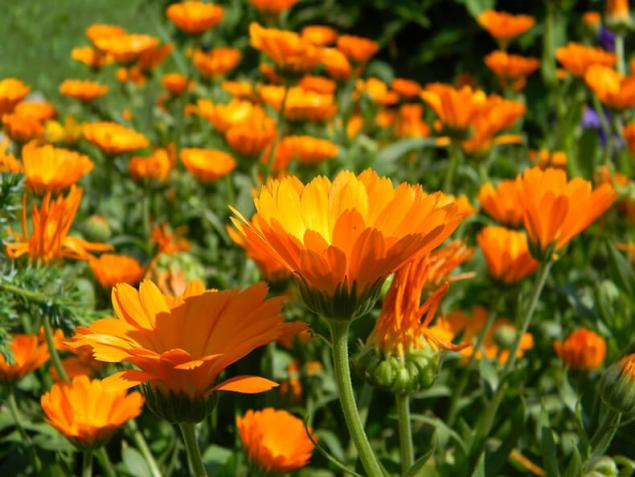
Calendula (calendula officinalis). Seeds (200 g) pour 10 l of water, insist within days and used to combat pests on vegetable crops. Some vegetable growers visualtree for spraying calendula in between rows of vegetable crops and strawberries. This prevents the infestation of plant mites and Fusarium root rots.
Potatoes. Green leaves (4 kg) was not affected by disease, either dried (2 kg), pour 10 liters of warm water, infused for 3-4 hours, filter and add 40 g of soap. Extract sprayed fruit crops against aphids and mites of vegetables — against cabbage white, moth isoki. The tops can prepare in the autumn. Its cut, dried and stored in a dry place.
Clematis vitalba (Manchurian clematis, clematis paniculata, clematis Manchurian). Insek-tional properties are preserved only in plants fresh. For spraying against sucking insects, aphids, medanic used infusions of unopened buds and flowers. Take 1.25 kg per 10 liters of water, insist within 1-2 hours. Infusions of fresh leaves: 0.5 kg per 10 liters of water against ticks.
Nettle. Use before flowering, chopped, add rain water (1:10) and incubated for 10 days, the fermented (hood) is used, diluting 10 times, to combat aphids and as a growth stimulant.
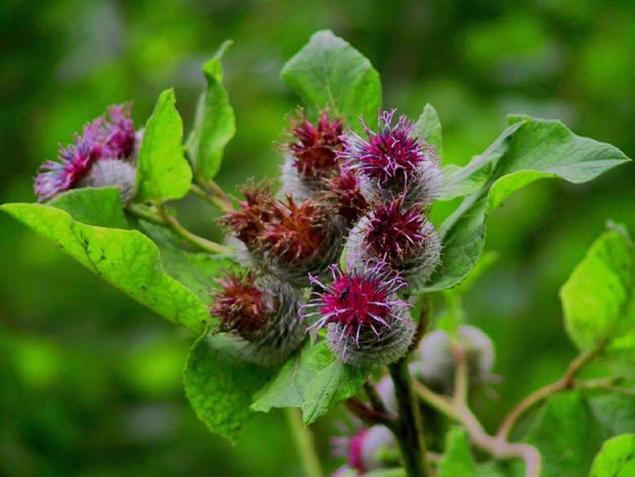
Burdock. Svezhezavarennyj the leaves of the plant are finely chopped, placed in a bucket (1/3 of volume), washed down with water to the brim, insist in for three days and filtered. Infusion sprayed cabbage, radish, radish and other vegetable crops against leaf-eating pests (caterpillars).
Onion. For spraying of cabbage seed shoots against spider mites and aphids 200 g of onion peel pour 10 liters of warm water, infused for 4-5 days, strain. Extract obtained the plants are sprayed every 5 days (total 3 treatments). To combat aphids, phytophagous mites and other sucking pests of vegetable crops onion skin fill the bucket up to half volume, poured 10 liters of water, insist within days, filtered, diluted 2 times with water and the resulting solution sprayed plants.
Nasturtium. The flowers of nasturtium have anti-bacterial property against Fusarium wilt of asters. These plants are sown close by.
The dandelion is. The crushed roots (200-300 g) or green leaves (400 g) pour 10 l of water, insist 2-3 hours, strain and use immediately for spraying fruit trees at full-blown kidneys and then after flowering (after dropping 15% petals) against aphids, mites and sucker. In the presence of pests, spraying is repeated several times with an interval of 10-15 days.
The alder shrub. To prepare the broth 1 kg of dry 2 kg of fresh crushed leaves pour 10 l of water, insist 24 hours, boil for 30-40 min, cooled and filtered through a 6-12 hours. The resulting broth sprayed fruit crops against aphids and spider mites. For otpugivateli green branches of alder stick among vegetable crops at a distance of 1.5 m from each other, periodically replacing them with fresh.
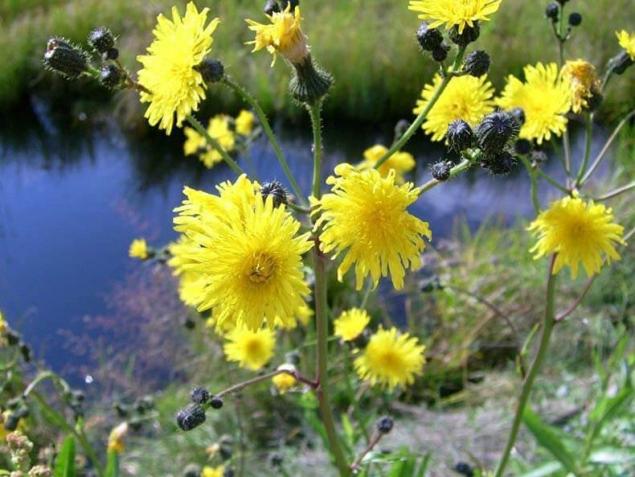
Sow Thistle field. Fresh plants are crushed. Take the 3.5 kg weight in 10 l of water, insist 7-8 hours. The infusion is effective in combating mildew, but requires 3-4-fold abundant spraying with intervals of 5 days.
Walnuts. The infusion of its leaves is recommended against the Colorado potato beetle. To do this, use fallen leaves. Harvest them in autumn and store in a dry ventilated area. 3-4 weeks before the appearance of the beetles leaves soaked in water at the rate of 2-3 kg per 10 liters of water. Before using infusion of 2% strain. A decoction of fresh walnut leaves is also recommended for controlling moths of fruit trees.
The chili pepper. To prepare the broth 1 kg of raw or 0.5 kg of dry chopped peppers pour 10 l of water, aged for 2 days, boiled for 1 hour and insist another 2 hours. The decoction is filtered and stored in a dark room. Used for spraying fruit and vegetable crops before flowering or after it (the green leaves) in the fight against aphids, mecanicaly, small caterpillars, cabbage moths, moths, and slugs. For the treatment of plants before flowering in 10 liters of water diluted with 0.5 liters of broth, and after flowering — 0.1 l of broth. The resulting solution was added 40 g of soap.
Parsley sowing, or curly. The plant sown on a border of ridges strawberries. This prevents the berries from damage by snails.

Tansy. Harvested in early flowering, cutting the entire inflorescence, dried in the open air or in a ventilated area. The dried raw material is ground into a powder which plants opilivayut against moth, sucker and cocoadev.
Wormwood. Use the broth for spraying plants against caterpillars of the Codling moth, aphids, pierids, scoop, spider mites, whiteflies, young larvae of Colorado beetle, leaf beetle on viburnum, medanic Apple and pear, sawflies and weevils.
Recipe 1. Half a bucket of finely chopped raw or 700-800 g of dried grass pour 10 liters of cold water, infused for 24 hours then boil for 30 min, filtered and diluted 2 times with water.
Recipe 2. 1 kg dried green mass of wormwood boiled for 10-15 min in a small amount of water, the decoction is cooled, add the infusion made from 1 kg of dry chicken manure, aged for 1-2 days in a small amount of water, the mixture is then filtered and diluted with water to 10 l. Fruit trees are sprayed 2 times with an interval of 7 days.
The camomile. Finely chopped leaves and buds (1 kg), collected during flowering, pour 10 liters of water heated to a temperature of 60-70 °C, infused for 12 hours and filtered. Before use, dilute the same amount of water and add 40 grams of soap per 10 l Spray fruit trees against aphids, mites, small caterpillars, larvae of sawflies, and also against the caterpillars and larvae of pests of vegetable crops.
Soda ash.
Recipe 1. Used for the treatment of berry bushes against powdery mildew, and as a deterrent against Mattila-strawberry weevil. For this, 30-40 g dissolved in 10 liters of water with addition of 40 g of liquid soap.
Recipe 2. 70 g is dissolved in 10 l of water with 20 g of liquid soap, sprayed against the mucous of the Sawfly.
Salt. Prevents infection of tomato Phytophthora. To handle use a 10% solution (1 kg per 10 l of water) of salt, which prevents the penetration of tissue infection due to the formation of the fruit, a thin film. The protective effect occurs within one month (in the absence of precipitation).
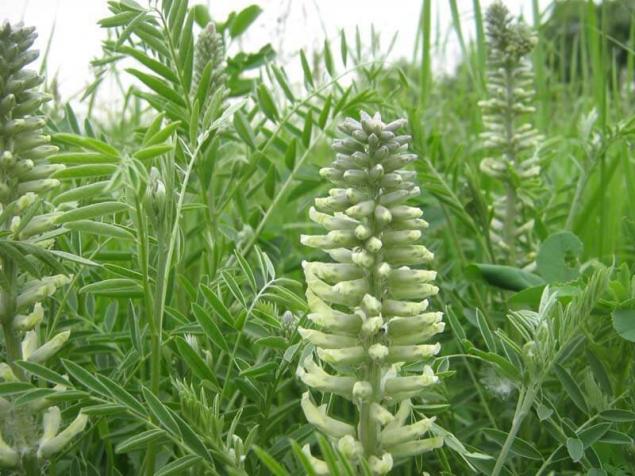
Sophora listovertka and tholstoplodna. Use in spring and summer spraying of fruit crops against aphids, larvae of plant-eating bugs, caterpillars, Codling moth, medanic, larvae of sawflies, small caterpillars and other harmful insects. Harvest the entire green part of the plant in flowering period and dried. 1-2 kg of dry raw pour 10 liters of water and insist during the day. Before administration, the solution filtered and diluted with water in equal amounts with the addition of 30-40 grams of soap.
Superphosphate, potassium chloride. Use a mixture of water extracts of superphosphate and potassium chloride to 2-3-fold foliar feeding (spraying method) against leaf-eating caterpillars and aphids. For preparation of working solution, take 10 g of superphosphate and 5 g of potassium chloride in 10 liters of water. The aqueous extract prepared 1-2 days before use. Spraying produce with intervals of 7-10 days.
Tobacco and real tobacco-tobacco.
Recipe 1. Use infusion for the destruction of aphids. One part of tobacco, of tobacco or of tobacco waste pour 10 parts of hot water and infused for days, then filtered. Before spraying, the infusion is diluted with water 2-3 times and add to it 40 g of soap per 10 liters of infusion.
Recipe 2. Infusion is used 2-3-fold spraying of fruit crops against aphids, psylla, thrips, caterpillars, leafrollers younger ages; gooseberry — against moth; vegetable cruciferous crops against the cabbage moth flea beetles and crucifers: Luke — against the larvae of krutogorniy.
In the preparation of infusions take 400-500 g of dry waste tobacco leaves, of tobacco or of tobacco dust placed in a dish, pour 10 liters of hot water and infused for two days. Then the infusion is filtered through a rare fabric and gently squeeze. The resulting liquid is diluted twice with water and add to it for every 10 l of solution 50 g of soap. The infusion is used immediately after preparation. It is poisonous to humans, so handle it carefully.
Recipe 3. A decoction is used against the same pests, that the tobacco infusion, as well as against young caterpillars Codling moths and other harmful insects. For cooking 1 kg of tobacco or of tobacco poured 10 liters of water and boil in a sealed container for 30 minutes Then the broth is infused during the day, well-drained, filtered, diluted 2-3 times with water, added to it is 8.4, and 0.5% of soap. The broth is very toxic and requires careful handling.
You will be inetersno:
How to make a fountain for the pond at the cottage
How to arrange drain shower
Tobacco and cigarette dust. Available in the form of powders, tablets and granules. Recommended for dusting during the growing season against sucking insects, flea beetles and other pests.
P. S. And remember, only by changing their consumption — together we change the world! ©
Source: dachnyj-sad-ogorod.com/recepty-nastoev-i-otvarov-dlya-borby-s-vreditelyami

Aloe. The juice of the plant diluted with water (1:1) and used for disinfection of vegetable seeds. Before sowing the seeds soak in this solution for 6 hours, then washed with water and well dried.
Orange. Dry crusts (1 kg) pour 10 liters of warm water and put in three days in a warm, dark place. Infusion is used without diluting for spraying of plants against aphids and mealy worms.

The marigolds. The plant is completely disrupted in the flowering period, dried, crushed, placed in amalienstein from pests receptance bucket (half), fill to the brim with warm water. Insist for two days, then filtered. In the infusion add 40 grams of household soap and use to spray berry plants against aphids. The treatment is carried out only until the first signs of ripening berries and resume after harvest. Infusion can disinfect the tubers of gladiolus from various fungal diseases before planting, as well as the testes asters and Wallflowers from the black legs, dropping him to 8-10 hours.
Hogweed dissected. Raw materials harvested before and after flowering (roots) and during flowering (aerial parts — leaves, stems), finely chopped, pour a water amount of 10 l of water for 1 kg of raw material, insist 24 hours, filtered and immediately used for the treatment of fruit crops against aphids, mites and other sucking pests.
Elderberry red. Young dry shoots or flowers of elderberry cook broths to protect fruit and vegetable crops against leaf-eating caterpillars, aphids, slugs, larvae of flies and beetles, while take 200-300 g of crushed shoots and flowers and soaked in 10 l of water. Infusion the plants are sprayed before flowering and after it. Red elderberry is a good deterrent means, for example, against the currant Bud mite. To get rid of it, before flowering currant bushes between her need to place in water fresh branches of an elder, changing them wilting. Recommended to plant elderberries on the property to deter gooseberry moth and of the Codling moth plum and Apple trees. The smell of elderberry also deters mice and rats, so the barns, sheds early planted red elderberry.traditional methods of pest control

Highlander pepper. For the destruction of leaf-eating pests of many vegetable and fruit crops you can use a decoction of the stems of this herb, which is collected during flowering (June — July). At the same time, it apply. Gathered stems (1 kg) pour 10 liters of water and boil for 30 minutes After settling, the broth is filtered, add in 30-40 grams of soap and used for spraying. After 1-1,5 days pests are killed.
White mustard. Mustard powder factory manufacturing (200 g), pour 10 liters of water and infused for 10-12 hours. Extract obtained sprayed Apple trees (green leaves), and other fruit crops (5-6 g on 10 l of water) against the red mite Codling.
Brassica juncea. Use the green leaves against aphids, caterpillars, scoop, tobacco thrips, red bugs and ticks.
Recipe 1. On 10 l of water take 100 grams of mustard powder, stir it in a little water to a creamy consistency, then poured the remaining amount of water.
Recipe 2. To prepare the solution against the red mite Codling take 200 g of powder factories manufacturing. Pour 10 liters of water and infused for 10-12 hours. Extract obtained spray Apple trees.
Recipe 3. Used when the appearance of red Apple tick. A solution is prepared from 50 g of mustard powder in 1 l of water. It is boiled and infused for three days in a tightly sealed container. This solution was then diluted in 20 liters of water. Obtained working solution sprayed plants. Garlic mustard can also be used for treatment of planting material (10 g of powder in 1 l of water).
Birch tar. Used for spraying against Colorado beetle. When preparing the working solution of 100 g of tar is diluted in 10 liters of water.
Datura ordinary. Used in the summer mainly for control of pests of fruit crops, plant bugs, spider mites, aphids and Apple suckers. Harvest the entire aboveground part of plants in the flowering period. Then dry that each plant is well ventilated, crushed, pour 10 liters of water and infused for at least 10 hours. The infusion is filtered before use, add 20-40 grams of soap.
The smoke of tobacco. Used to kill aphids in greenhouses and medanic in the gardens. In the first case iron pans or pans scatter tobacco dust or tobacco the rate of 5-10 grams of tobacco per 1 m2 of the premises. Trays put on burning coals or hot plates with a closed spiral. And fumigate the premises prior to the termination of dymlenija. For the treatment of orchards against medanic 2-3 kg of tobacco dust poured into a pile of straw or other combustible material, and after kindling a fire, fumigate for half an hour.
Ash. Wood or straw ash opilivayut seedlings of cabbage, radish and radish at a rate of 5 g per 1 m2 to deter cruciferous flea beetles. You can apply polynomially infusion. To do this, 1 kg of ash poured 8 liters of boiling water, cover, insist two days, filtered, made up to 10 l, add 40 g of soap, previously dissolved in water. The plants are sprayed as needed. Ash-soap infusion is used against a complex of sucking pests. Amateur growers have also reported the effectiveness of dusting with ashes against the Colorado potato beetle. Gray gelseminine destroy pollination shrubs at maturity at the rate of 10-15 g of ash into a Bush. If necessary, the dusting is repeated 2-3 times. Many gardeners to combat powdery mildew of currant, gooseberry, cucumber, cherry mucous Sawfly and other pests and diseases the plants are sprayed with a solution of ash: 300 g sifted ash is boiled for half an hour, the supernatant broth is filtered and adjusted to 10 L. Before use, add 40 g any soap. Such processing can be done twice a month.
Lime. Used for dusting between the rows against slugs. Consumption of 50 g per 1 m2. The treatment is carried out in the late evening or early morning.

Calendula (calendula officinalis). Seeds (200 g) pour 10 l of water, insist within days and used to combat pests on vegetable crops. Some vegetable growers visualtree for spraying calendula in between rows of vegetable crops and strawberries. This prevents the infestation of plant mites and Fusarium root rots.
Potatoes. Green leaves (4 kg) was not affected by disease, either dried (2 kg), pour 10 liters of warm water, infused for 3-4 hours, filter and add 40 g of soap. Extract sprayed fruit crops against aphids and mites of vegetables — against cabbage white, moth isoki. The tops can prepare in the autumn. Its cut, dried and stored in a dry place.
Clematis vitalba (Manchurian clematis, clematis paniculata, clematis Manchurian). Insek-tional properties are preserved only in plants fresh. For spraying against sucking insects, aphids, medanic used infusions of unopened buds and flowers. Take 1.25 kg per 10 liters of water, insist within 1-2 hours. Infusions of fresh leaves: 0.5 kg per 10 liters of water against ticks.
Nettle. Use before flowering, chopped, add rain water (1:10) and incubated for 10 days, the fermented (hood) is used, diluting 10 times, to combat aphids and as a growth stimulant.

Burdock. Svezhezavarennyj the leaves of the plant are finely chopped, placed in a bucket (1/3 of volume), washed down with water to the brim, insist in for three days and filtered. Infusion sprayed cabbage, radish, radish and other vegetable crops against leaf-eating pests (caterpillars).
Onion. For spraying of cabbage seed shoots against spider mites and aphids 200 g of onion peel pour 10 liters of warm water, infused for 4-5 days, strain. Extract obtained the plants are sprayed every 5 days (total 3 treatments). To combat aphids, phytophagous mites and other sucking pests of vegetable crops onion skin fill the bucket up to half volume, poured 10 liters of water, insist within days, filtered, diluted 2 times with water and the resulting solution sprayed plants.
Nasturtium. The flowers of nasturtium have anti-bacterial property against Fusarium wilt of asters. These plants are sown close by.
The dandelion is. The crushed roots (200-300 g) or green leaves (400 g) pour 10 l of water, insist 2-3 hours, strain and use immediately for spraying fruit trees at full-blown kidneys and then after flowering (after dropping 15% petals) against aphids, mites and sucker. In the presence of pests, spraying is repeated several times with an interval of 10-15 days.
The alder shrub. To prepare the broth 1 kg of dry 2 kg of fresh crushed leaves pour 10 l of water, insist 24 hours, boil for 30-40 min, cooled and filtered through a 6-12 hours. The resulting broth sprayed fruit crops against aphids and spider mites. For otpugivateli green branches of alder stick among vegetable crops at a distance of 1.5 m from each other, periodically replacing them with fresh.

Sow Thistle field. Fresh plants are crushed. Take the 3.5 kg weight in 10 l of water, insist 7-8 hours. The infusion is effective in combating mildew, but requires 3-4-fold abundant spraying with intervals of 5 days.
Walnuts. The infusion of its leaves is recommended against the Colorado potato beetle. To do this, use fallen leaves. Harvest them in autumn and store in a dry ventilated area. 3-4 weeks before the appearance of the beetles leaves soaked in water at the rate of 2-3 kg per 10 liters of water. Before using infusion of 2% strain. A decoction of fresh walnut leaves is also recommended for controlling moths of fruit trees.
The chili pepper. To prepare the broth 1 kg of raw or 0.5 kg of dry chopped peppers pour 10 l of water, aged for 2 days, boiled for 1 hour and insist another 2 hours. The decoction is filtered and stored in a dark room. Used for spraying fruit and vegetable crops before flowering or after it (the green leaves) in the fight against aphids, mecanicaly, small caterpillars, cabbage moths, moths, and slugs. For the treatment of plants before flowering in 10 liters of water diluted with 0.5 liters of broth, and after flowering — 0.1 l of broth. The resulting solution was added 40 g of soap.
Parsley sowing, or curly. The plant sown on a border of ridges strawberries. This prevents the berries from damage by snails.

Tansy. Harvested in early flowering, cutting the entire inflorescence, dried in the open air or in a ventilated area. The dried raw material is ground into a powder which plants opilivayut against moth, sucker and cocoadev.
Wormwood. Use the broth for spraying plants against caterpillars of the Codling moth, aphids, pierids, scoop, spider mites, whiteflies, young larvae of Colorado beetle, leaf beetle on viburnum, medanic Apple and pear, sawflies and weevils.
Recipe 1. Half a bucket of finely chopped raw or 700-800 g of dried grass pour 10 liters of cold water, infused for 24 hours then boil for 30 min, filtered and diluted 2 times with water.
Recipe 2. 1 kg dried green mass of wormwood boiled for 10-15 min in a small amount of water, the decoction is cooled, add the infusion made from 1 kg of dry chicken manure, aged for 1-2 days in a small amount of water, the mixture is then filtered and diluted with water to 10 l. Fruit trees are sprayed 2 times with an interval of 7 days.
The camomile. Finely chopped leaves and buds (1 kg), collected during flowering, pour 10 liters of water heated to a temperature of 60-70 °C, infused for 12 hours and filtered. Before use, dilute the same amount of water and add 40 grams of soap per 10 l Spray fruit trees against aphids, mites, small caterpillars, larvae of sawflies, and also against the caterpillars and larvae of pests of vegetable crops.
Soda ash.
Recipe 1. Used for the treatment of berry bushes against powdery mildew, and as a deterrent against Mattila-strawberry weevil. For this, 30-40 g dissolved in 10 liters of water with addition of 40 g of liquid soap.
Recipe 2. 70 g is dissolved in 10 l of water with 20 g of liquid soap, sprayed against the mucous of the Sawfly.
Salt. Prevents infection of tomato Phytophthora. To handle use a 10% solution (1 kg per 10 l of water) of salt, which prevents the penetration of tissue infection due to the formation of the fruit, a thin film. The protective effect occurs within one month (in the absence of precipitation).

Sophora listovertka and tholstoplodna. Use in spring and summer spraying of fruit crops against aphids, larvae of plant-eating bugs, caterpillars, Codling moth, medanic, larvae of sawflies, small caterpillars and other harmful insects. Harvest the entire green part of the plant in flowering period and dried. 1-2 kg of dry raw pour 10 liters of water and insist during the day. Before administration, the solution filtered and diluted with water in equal amounts with the addition of 30-40 grams of soap.
Superphosphate, potassium chloride. Use a mixture of water extracts of superphosphate and potassium chloride to 2-3-fold foliar feeding (spraying method) against leaf-eating caterpillars and aphids. For preparation of working solution, take 10 g of superphosphate and 5 g of potassium chloride in 10 liters of water. The aqueous extract prepared 1-2 days before use. Spraying produce with intervals of 7-10 days.
Tobacco and real tobacco-tobacco.
Recipe 1. Use infusion for the destruction of aphids. One part of tobacco, of tobacco or of tobacco waste pour 10 parts of hot water and infused for days, then filtered. Before spraying, the infusion is diluted with water 2-3 times and add to it 40 g of soap per 10 liters of infusion.
Recipe 2. Infusion is used 2-3-fold spraying of fruit crops against aphids, psylla, thrips, caterpillars, leafrollers younger ages; gooseberry — against moth; vegetable cruciferous crops against the cabbage moth flea beetles and crucifers: Luke — against the larvae of krutogorniy.
In the preparation of infusions take 400-500 g of dry waste tobacco leaves, of tobacco or of tobacco dust placed in a dish, pour 10 liters of hot water and infused for two days. Then the infusion is filtered through a rare fabric and gently squeeze. The resulting liquid is diluted twice with water and add to it for every 10 l of solution 50 g of soap. The infusion is used immediately after preparation. It is poisonous to humans, so handle it carefully.
Recipe 3. A decoction is used against the same pests, that the tobacco infusion, as well as against young caterpillars Codling moths and other harmful insects. For cooking 1 kg of tobacco or of tobacco poured 10 liters of water and boil in a sealed container for 30 minutes Then the broth is infused during the day, well-drained, filtered, diluted 2-3 times with water, added to it is 8.4, and 0.5% of soap. The broth is very toxic and requires careful handling.
You will be inetersno:
How to make a fountain for the pond at the cottage
How to arrange drain shower
Tobacco and cigarette dust. Available in the form of powders, tablets and granules. Recommended for dusting during the growing season against sucking insects, flea beetles and other pests.
P. S. And remember, only by changing their consumption — together we change the world! ©
Source: dachnyj-sad-ogorod.com/recepty-nastoev-i-otvarov-dlya-borby-s-vreditelyami






